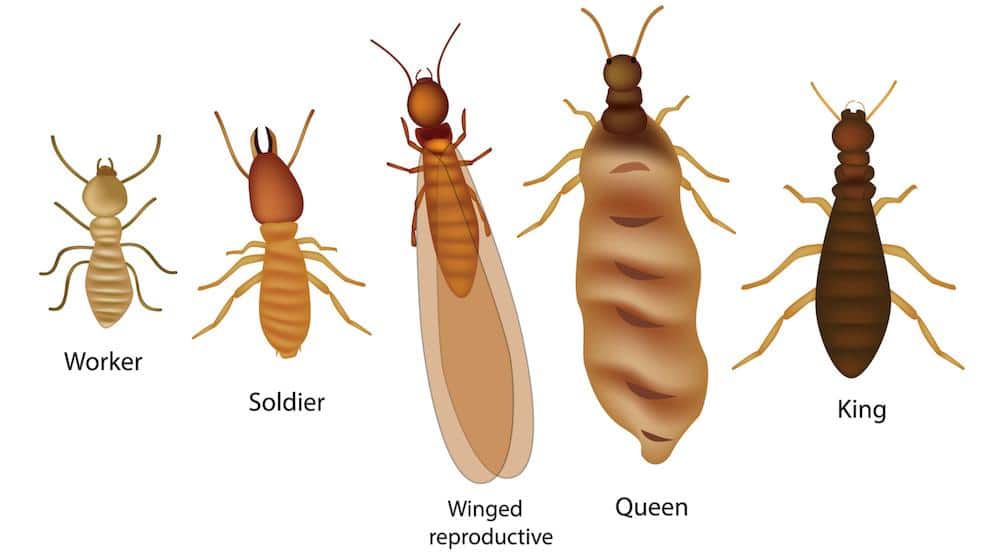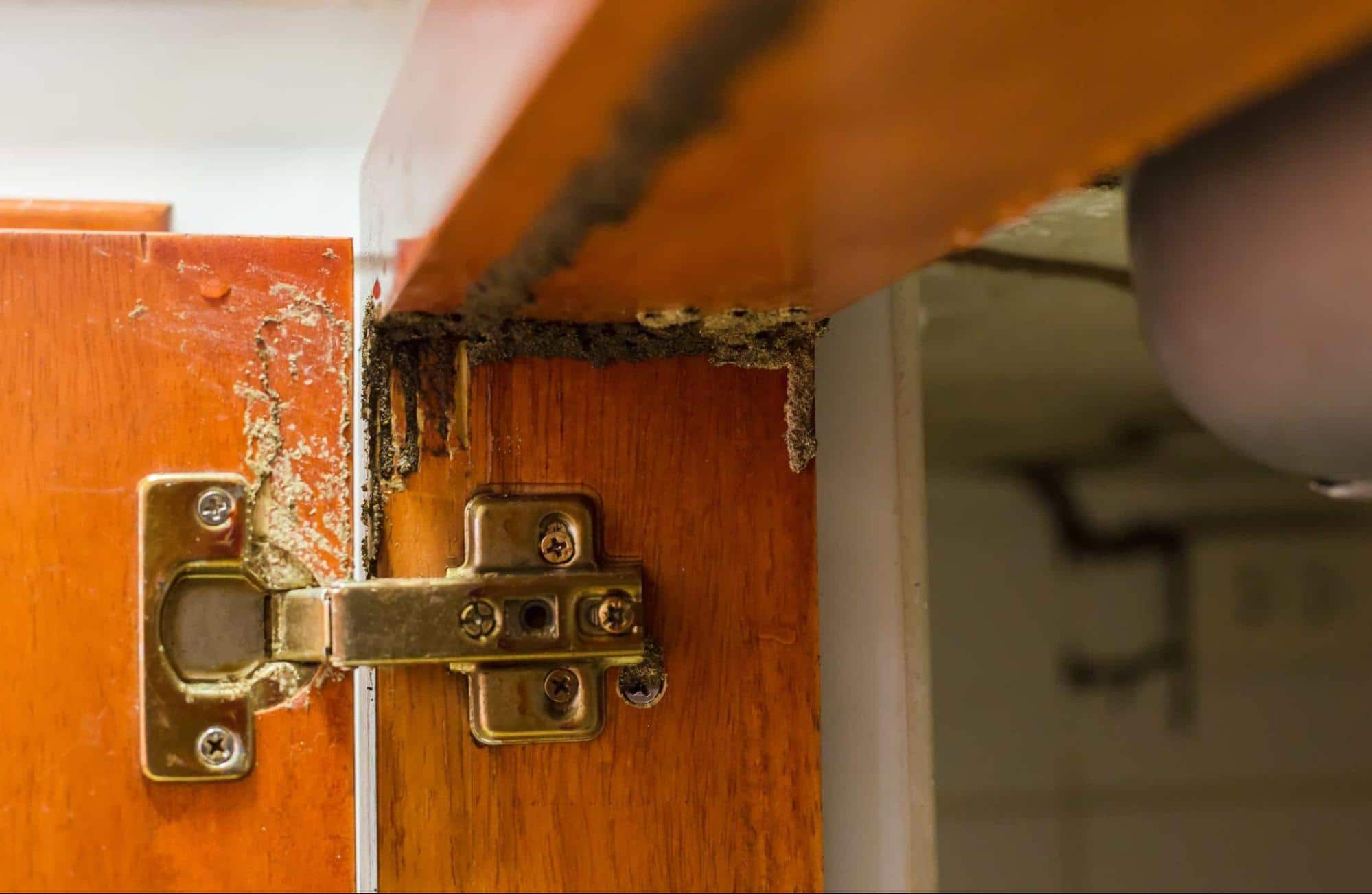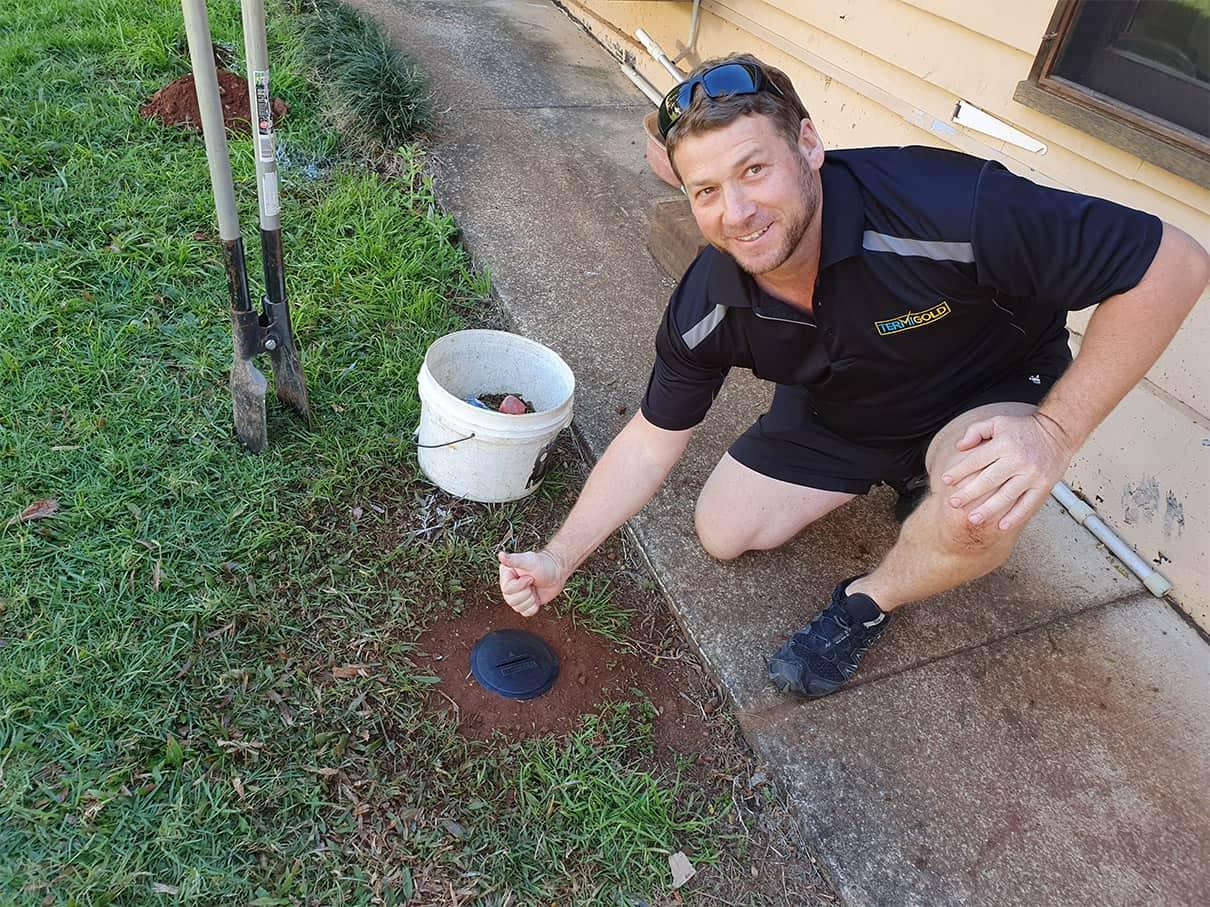White ants are one of the most invasive household pests out there. With their ability to chew through wood quickly, they can bring down entire structures in a matter of weeks or months if not treated.
Termites (commonly called white ants) cause over $100 million in damage to residential and commercial buildings in Australia every year. By hiding underneath the flooring and behind walls, they can be almost undetectable until it is too late. Most insurance policies do not cover white ant damage either, so it’s important you take preventative measures.
So what can you do? We’ll show you how to prepare for white ants in Australia and protect your home.
When Is White Ant Season?
Although they are active throughout the year, termite season AKA swarming season often takes place during warmer months. Most subterranean termites swarm during the spring and summer months, and drywood termites typically swarm late summer. Swarming happens when a termite nest is overpopulated and the colony looks to expand.
You can usually identify them through swarms, droppings and discarded wings. However, white ants don’t hibernate for the winter and some species have been known to start swarming in winter if the days are particularly warm. This is why it’s important to keep monitoring in place all year round, especially in hotter regions of Australia.

What Do White Ants Look Like?
Australia has over 300 species of white ants, however, there are only two types that are harmful to buildings – subterranean termites and drywood termites. Termites are organised by a caste system so the same colony will have different looking termites.
The workers are what you’ll find eating through the walls and furniture. They can often be confused with black ants as they are similar in size, but they are distinctly lighter in colour (hence the name white ants).
Soldiers are slightly larger and have a mandible to defend against predators. Winged reproductives, also known as “swarmers or alates”, are usually seen after rainfall searching for new food sources to start a colony. You can identify them by their wings which are roughly equal in length and their straight antennae, which may droop.
Finally, the king and queen are the largest castes, responsible for reproducing and carefully protected deep inside the colony. A queen can live for up to 10 years but killing her will kill the colony unless another queen is reinstated.
How Do White Ants Enter Houses?
White ants are mischievous pests that are amazing at finding ways into your house. Common access points include:
- Cracks
- Downpipes
- Porches/alfresco areas
- Vents
- Steps
- Ramps
- Windows

How To Identify Signs of White Ants
White ants rarely emerge from soil, mud tubes or food sources through which they are tunnelling so it can be difficult to spot them. They will usually eat through the inside of the structure, leaving only a thin layer of protection from the outside environment.
In addition to structural timbers, white ants eat through furniture, paper products, fabrics, clothing, footwear and even soft plastics, building sealants and foam insulation. The good news is that they will leave behind traces of evidence!
Here are the signs you should be on the lookout for:
Mud Tubes
The most common termite species in Australia are subterranean termites. They create miniature mud tubes that act as passages between the colony and its food sources. It’s also how they infiltrate your home.
Keep an eye out for build ups of moist soil or dirt around the perimeter of your house as well as on walls, floors, beams, basement and exterior walls. Take action as soon as possible by cleaning up the mud tubes as this will prevent them from moving around your property.
Hollow-sounding Timber
As white ants eat through wooden structures, they will slowly deteriorate and become hollow, causing the wood to give off a different sound when it is knocked. When you conduct your search, use your knuckles to knock against different areas of the structural beams and listen for a hollow sound.
Increased Levels Of Flying Insects After Rain
You may notice swarms of winged termites, called alates, after rain showers. These flying termite swarms are provoked by heavy rainfall and warm, humid temperatures. Since white ants need moist soil to thrive, the newly dampened ground is an environmental cue for alates to begin their mating process.
How To Conduct A Termite Inspection
You should conduct a termite inspection at least once a year. It will only take an hour or two, but it’s super important as it will help you identify activity early and remain alert throughout the year.
To conduct a termite inspection, you will only need a torch and a screwdriver. Move slowly and methodically through each room of the home in a clockwise direction, looking for mud tubes, cracking in the pain and tapping to hear for hollow-sounding timber.
We’ve created an in-depth guide that shows How To Identify A Termite Infestation In Your Home. Check it out and get stuck into the search this weekend.

Install Bait Stations For Monitoring Year Round
After you conduct your termite inspection, you’ll have two outcomes — there’s damage or there isn’t. If you notice termite damage, it’s important to bait on termite activity and wait for a month for the bait to do its job.
If you haven’t seen any sign of termites, you should set up bait stations around your home to monitor termite activity. This termite treatment will work throughout the hot seasons and during those winter months, giving you the peace of mind that you’re always one step ahead.
TermiGold has helped thousands of Aussies take the first steps to protect their home from termite infestations. Get yourself started with Termite Bait Stations or get in touch with one of our friendly team members to learn more.